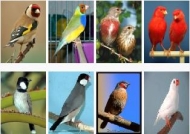 The International Community of Aviculture |
 |
 la Communauté internationale d'Aviculture |
| Home | Forums | ICA Arabic | ICA Arabic Community | Rules | Contact us |  |
 |
 |
 |
 |
 |
|---|
| It is currently Sun Jul 13, 2025 6:05 am |
|
• All times are UTC |
| BBCode guide |
|---|
|
Introduction What is BBCode? Text Formatting How to create bold, italic and underlined text How to change the text colour or size Can I combine formatting tags? Quoting and outputting fixed-width text Quoting text in replies Outputting code or fixed width data Generating lists Creating an Unordered list Creating an Ordered list Creating Links Linking to another site Showing images in posts Adding an image to a post Adding attachments into a post Other matters Can I add my own tags? |
Introduction |
|
BBCode is a special implementation of HTML. Whether you can actually use BBCode in your posts on the forum is determined by the administrator. In addition you can disable BBCode on a per post basis via the posting form. BBCode itself is similar in style to HTML, tags are enclosed in square brackets [ and ] rather than < and > and it offers greater control over what and how something is displayed. Depending on the template you are using you may find adding BBCode to your posts is made much easier through a clickable interface above the message area on the posting form. Even with this you may find the following guide useful.
|
Text Formatting |
|
BBCode includes tags to allow you to quickly change the basic style of your text. This is achieved in the following ways:
|
|
To alter the colour or size of your text the following tags can be used. Keep in mind that how the output appears will depend on the viewers browser and system:
|
|
Yes, of course you can, for example to get someones attention you may write:
[size=200][color=red][b]LOOK AT ME![/b][/color][/size] this would output LOOK AT ME! We don’t recommend you output lots of text that looks like this though! Remember it is up to you, the poster, to ensure tags are closed correctly. For example the following is incorrect: [b][u]This is wrong[/b][/u] |
Quoting and outputting fixed-width text |
|
There are two ways you can quote text, with a reference or without.
|
|
If you want to output a piece of code or in fact anything that requires a fixed width, e.g. Courier type font you should enclose the text in [code][/code] tags, e.g.
[code]echo "This is some code";[/code] All formatting used within [code][/code] tags is retained when you later view it. PHP syntax highlighting can be enabled using [code=php][/code] and is recommended when posting PHP code samples as it improves readability. |
Generating lists |
|
BBCode supports two types of lists, unordered and ordered. They are essentially the same as their HTML equivalents. An unordered list outputs each item in your list sequentially one after the other indenting each with a bullet character. To create an unordered list you use [list][/list] and define each item within the list using [*]. For example to list your favourite colours you could use:
[list] [*]Red [*]Blue [*]Yellow [/list] This would generate the following list:
|
|
The second type of list, an ordered list, gives you control over what is output before each item. To create an ordered list you use [list=1][/list] to create a numbered list or alternatively [list=a][/list] for an alphabetical list. As with the unordered list, items are specified using [*]. For example:
[list=1] [*]Go to the shops [*]Buy a new computer [*]Swear at computer when it crashes [/list] will generate the following:
[list=a] [*]The first possible answer [*]The second possible answer [*]The third possible answer [/list] giving
|
Creating Links |
|
phpBB BBCode supports a number of ways of creating URIs (Uniform Resource Indicators) better known as URLs.
[url=http://www.google.com/][img]http://www.google.com/intl/en_ALL/images/logo.gif[/url][/img] is not correct which may lead to your post being deleted so take care. |
Other matters |
|
If you are an administrator on this board and have the proper permissions, you can add further BBCodes through the Custom BBCodes section.
|
|
• All times are UTC |
The International Community of Aviculture
ICA© 2014 : All rights reserved
Contact us
Best viewed more than 1024*768 pixels
ICA© 2014 : All rights reserved
Contact us
Best viewed more than 1024*768 pixels
